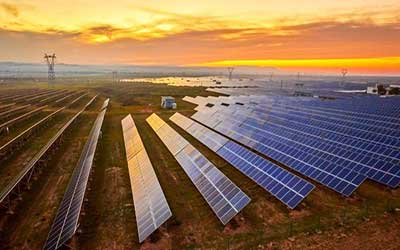Date : 26/05/2023
Relevance: GS-3: Conservation, Environmental Pollution, and Degradation, Environmental Impact Assessment.
Key Phrases: net-zero emissions by 2070, Efficiency in Renewable Electricity Generation, Shorter Lifespan of Renewable Power Plants, particularly pumped hydroelectric energy storage (PHES), renewable energy transition.
Why in News?
- India's ambitious goal of achieving net-zero emissions by 2070 hinges on a successful transition to renewable energy sources.
- While the country has made significant strides in expanding its renewable electricity capacity, particularly in solar energy, there are several challenges that must be addressed to ensure a sustainable and efficient energy transition.
Enhancing Efficiency in Renewable Electricity Generation
- Renewable electricity sources, such as solar and wind, face efficiency limitations compared to fossil-based sources like gas and coal.
- The relatively lower efficiency of renewable power plants, where a 100 MW solar plant generates an average of 20 MW of electricity, hinders the broader adoption of renewable energy. Comparatively, gas or coal-based power plants can generate 80 MW.
- Hydroelectric power, on the other hand, exhibits high efficiency, ranging from 70% to 80%.
- Overcoming these efficiency challenges is crucial to increase the share of renewables in India's power generation beyond the current stagnant level of 12%.
Addressing the Shorter Lifespan of Renewable Power Plants:
- Renewable power plants, such as wind farms and solar concentrated/photovoltaic plants, have shorter lifespans compared to traditional power plants.
- While a wind farm typically operates for 20 years, and a solar plant lasts around 30 years, coal power plants can safely operate for 40 years, and nuclear power plants have an even longer lifespan of 50 years.
- The shorter lifespan of renewable plants necessitates frequent replacements and investments in new infrastructure, adding to the challenges of scaling up renewable energy capacity.
Achieving Self-Sufficiency in Renewable Energy Supply Chains:
- India currently relies on global supply chains for various components of solar-based electricity.
- This dependence exposes the country to risks associated with international price fluctuations.
- To mitigate these risks and ensure a stable and cost-effective renewable energy sector, India needs to establish a robust and self-sufficient domestic supply chain for renewable energy components.
- While falling prices of photovoltaic modules offer optimism, achieving self-sufficiency is critical for long-term sustainability.
Grid Balancing and Variability of Renewable Sources:
- Renewable energy sources exhibit inherent variability due to natural factors like wind speed and sunlight availability.
- To address this challenge, other countries integrate renewable capacity with complementary sources such as hydroelectric power, particularly pumped hydroelectric energy storage (PHES), for efficient grid balancing.
- India, however, has been slow in adopting PHES as a favoured solution. Recently, the country has started exploring electricity storage in batteries to balance the intermittent nature of renewable energy.
- However, the lack of an efficient battery recycling and disposal system poses environmental and operational risks that must be addressed for a sustainable energy transition.
Environmental Risks and Future Trade Barriers:
- India's relaxed environmental norms have attracted significant foreign investment in energy-intensive sectors.
- To create a level playing field for domestic producers, the European Union plans to impose a carbon border adjustment tax on imported commodities, considering their carbon emissions.
- In the future, the scope of such taxes may extend to include battery recycling and disposal.
- India must develop efficient recycling and disposal systems to mitigate environmental risks and potential trade barriers that could impact the renewable energy sector.
Conclusion:
- As India pursues its renewable energy transition, it is essential to acknowledge and address the challenges associated with efficiency, lifespan, supply chain, grid balancing, and environmental risks.
- While renewable energy expansion remains a priority, a balanced approach that includes coal-based electricity with carbon capture and nuclear energy can provide stability and reliability to India's energy mix.
- By strategically planning and incorporating these considerations, India can overcome the obstacles in its path and navigate towards a successful and sustainable energy transition, ultimately achieving its net-zero emission goals.
Source: The Hindu BL
Mains Question:
Q. Discuss the challenges and limitations associated with India's transition to renewable electricity sources, and analyse the strategies that can be adopted to ensure a successful and sustainable energy transition.






















